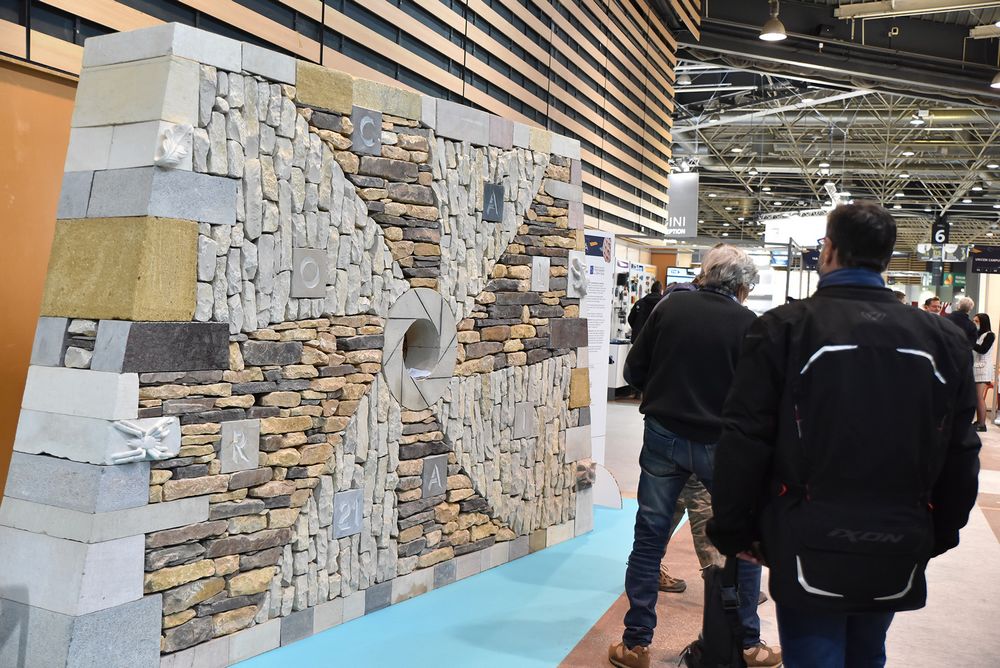Stonecutting trade is a precious asset for landscaping projects
From cutting building blocks to restoring monuments, local authorities and landscapers increasingly call on stonecutters.

For cutting building blocks, restoring monuments, creating stairways and memorials, local authorities and landscape designers increasingly call on stonecutters - a trade with a host of facets. Bruno Combernoux, Director of the stone trades institute – part of Les Compagnons du Devoir trade guild - explains.

Stonecutting can be useful in many activities
From the extraction of blocks of stone to shaping them in workshops and their installation, stonecutting has been a recognized trade for many centuries. With its ancient and modern tools, it is absolute master of stereotomy (stonecutting) and its geometrical layouts are a veritable Art, appreciated as much in the restoration of heritage buildings as in modern-day construction and decoration.
Stonecutters are often skilled in several aspects of their trade turning their hands to engraving, masonry and stone sculpting. Their multiple talents allow them to meet complex requests.
A stonecutter’s artistic expression lies in the original concept and drawing.
- Bruno Combernoux
Know-how currently much in demand
In a meeting at Rocalia 2021, Bruno Combernoux told us that stonecutting was always a highly successful age-old trade – and still is in 2022! “Today, the French State has a wide range of monument restoration programs so there is always work to be done! And in the short term, households are spending more money on landscaping and decoration so there is also a host of jobs from private home-owners.”
The only threat to French stonecutters working directly in French quarries and finishing workshops comes from international competition. “But building sites cannot be delocalized and we have one of the world’s best stonecutting training systems. This skill is easily exported and French stone work is very much in demand outside the country”, says Bruno Combernoux.
Discover 4 natural stone trends to know
The stonecutting trade needs local authorities - and vice versa
Local authorities have everything to gain by using local natural stone for their public works. Reversible, easy to dismantle and recycle, natural stone buildings fully meet the challenges of today’s world. As Bruno Combernoux illustrates, the circular economy is preserved: “The stone blocks are produced in France, our natural stone craftsmen have work and they consume locally. It is a virtuous circle which also protects this age-old know-how”.
In France, stone trades are a living heritage and stone contributes to the creation of our heritage buildings and in this way to the development of tourism – plus all the ecological, esthetic and social benefits we addressed in this article!
The invaluable stonecutter’s know-how is, however, on the brink of disappearance. Today it is difficult to find young people who want to make their career in this trade! Local authorities thus have a crucial part to play by choosing natural French stone for their projects (which will benefit all the trades in the sector), and by their implication in promoting stone trade training apprenticeships and craft industry trades to school-leavers. More recently, the "Route de la Pierre" (Natural Stone Road) left France for a scientific expedition in Eurasia in order to collect data about this rare trade.
When landscapers develop an interest in natural stone
Coming from the ground, stone is a natural companion for plants. At Rocalia 2021, many landscape designers showed their interest in this material and ways in which to include it in their landscapes, like the dry stone walls discussed at a Paysalia conference.
“Stonecutters can help landscape designers to use stone to its best advantage. For example, we can advise to them on the right stone for a job depending on its geographical location, because not all stones have the same resistance to frost”, says Bruno Combernoux. “It would be interesting to share our professional skills, promote inter-trade experience exchanges and integrate natural stone in the training courses of landscape designers and vice versa.”
On public or private building sites, stonecutters can deploy a whole palette of rare skills, for durable, responsible and even astonishing projects. This is why Rocalia 2021 presented “De rebus Naturae PROJECT”, a 2.47m high and 4m long wall, demonstrating all the tricks of the stone trade. Did you see it?

Our thanks to Bruno Combernoux, Director of the stone trades institute – part of Les Compagnons du Devoir trade guild.
© Photos credits: Nicolas Rodet




